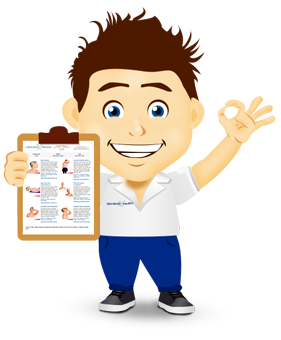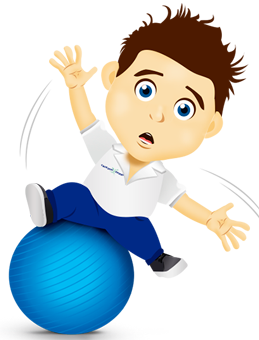
Next steps:
Feel free to read the advice sheet below! To get the full benefit click on 'Start treatment'. By starting the treatment you will get access to weekly rehab programmes online for FREE. You will be able to track your progress, pain levels and we will remind you to do your exercises every day!
This is a specific advice regarding quadriceps tendon pain, tears and strains.
Quadriceps Tendon Tear
The quadriceps is the main muscle group at the front of the thigh, and the muscle attaches into the kneecap and below the knee cap. The area where a quadriceps tendon tear occurs is most commonly just above the knee cap.
Even though anyone can injure the tendon, tears tend to be most common among those who are middle-aged and those who play a lot of jumping or running sports. Complete tears of the tendon are disabling, but very rare in this area. It is possible to tear the tendon below the knee cap and this could end up requiring surgery to regain full function in the knee.
Many tears don’t disrupt the soft tissue in the area. It resembles a rope being stretched to the point where some of the fibers might be torn, but the rope is still in-tact. In a complete tear, the soft tissue will end up splitting into two separate pieces.
A tendon tear is often worse than a muscle tear. The muscle in comparison tends to heal quite quickly, but the tendon is slower to heal, with the tendon being thicker and stronger.
A quadriceps tendon tear is usually a sports injury, with football, soccer, hockey and sprinting being the most common causes. Some therapists blame an imbalance of the quadriceps and hamstrings (on the back of the thigh). Some experts blame a shortening of the quadriceps, placing more stress on the tendon attachments. But nevertheless, if the force going through the tendons are more than the muscle can sustain, there is risk of a tear.
Tendon tears to the quadriceps are graded I, II and III. Grade I tears are mild and can take up to 6 weeks to repair, grade II tears are more serious, and can take up to 12 weeks to repair, and Grade III tears are ruptures, and the most serious that sometimes require surgery to re-attach the tendon. Fortunately grade III tears are extremely rare in this area.
Quadriceps Tendon Tear Anatomy
The leg is the lower limb in the body that supports the body whenever standing, as well as providing the ability to run, walk, jump and perform various other movements. It extends from the hip joint all the way down to the ankle, which includes the largest of all bones in the body. The leg has five different sections: the upper leg, lower leg, knee, foot and ankle.
The upper part of the leg begins at the hip and goes all the way down to the knee. The main bone in this region is the femur, which is actually the largest bone throughout the entire body. The head of the femur forms the ball-and-socket joint for the hip. The base of the bone creates part of the knee. It is in this part of the leg that the quadriceps lie. The four quad muscles meet above the patella to form the quadriceps tendon. This tendon attaches the quads to the patella. As the muscles work together, they help to straighten the knee.
The quadriceps tendon tear is not to be confused with the patella tendon tear. The patella tendon joins below the knee cap, the quadriceps tendon above the knee cap.
How to Treat a Quadriceps Tendon Tear:
- Immobilisation
It might be necessary to wear a brace or knee immobilizer. This helps to keep the knee straight and allow it the time needed to heal. You will probably end up needing crutches to help avoid placing all of your weight on the injured leg. Expect to spend around three to six weeks in the immobiliser. Only use this on guidance of your doctor.
- Physical Therapy
Once the initial pain and swelling has gone down, you can begin physical therapy. Using specific exercises, you can help to restore strength and movement. Exercises are slowly added to your program. Leg raises to strengthen the quads are often a key component of physical therapy. As time progresses, the therapist will unlock the brace. In doing so, you will be able to move better. As you heal, the exercises prescribed will change. You will be told when it is safe to resume sports activities. Electrotherapy, acupuncture, and LASER can all help speed up recovery.
Tips:
- When you aren’t on your feet for an extended period of time, the tendons and muscles that support the knees will lose flexibility and strength. So it can be a problem for people who sit all day during their jobs, and then exercise straight after work.
- Using corticosteroids has been shown to increase weakness in the tendons and muscles.
- If you place a heavy load on the leg when your foot is planted and the knee is partially bent, you could tear the tendon.
Direct forces to the front part of the knee, falling and lacerations can all cause tears to occur.

